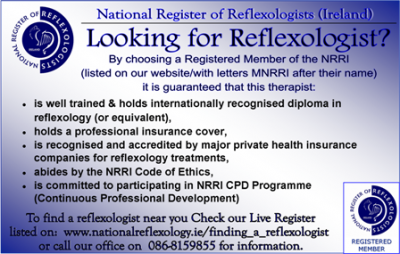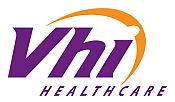LIST OF ALL REFLEXOLOGY
RELATED ARTICLES: >>here>>
LOOKING FOR REFLEXOLOGIST? >>CLICK HERE>>
24. What Does the Research
Say about Reflexology?
Research
studies in the U.S. and around the world indicate possible benefits of
reflexology for various conditions, particularly as an intervention to reduce
pain, enhance relaxation, and reduce psychological symptoms, such as anxiety
and depression. However reviewers of the research have noted that the quality
of reflexology studies is mixed and more high-quality research is needed.
What do summaries of
the research say?
One
large review by Kunz and Kunz (2008) summarized 168 research studies and
abstracts from journals and meetings from around the world. Many of these
studies originated in peer-reviewed journals in China and Korea. All of the
studies had information about the frequency and duration of the reflexology
application. Based on the studies they reviewed, Kunz and Kunz concluded that
reflexology may:
1. Have an impact on specific organs (e.g.,
fMRI readings demonstrated an increase in blood flow to kidneys and to the
intestines)
2. Be associated with an amelioration of
symptoms (e.g., positive changes were noted in kidney functioning with kidney
dialysis patients)
3. Create a relaxation effect (e.g., EEGs measure
alpha and theta waves, blood pressure was decreased, and anxiety was lowered)
4. Aid in pain reduction (27 studies
demonstrated a positive outcome for reduction in pain; e.g., AIDS, chest pain,
peripheral neuropathy of diabetes mellitus, kidney stones, and osteoarthritis)
Other
systematic reviews are cautious in saying that reflexology may have a positive
effect on type 2 diabetes and may exert a beneficial effect on lowering blood
pressure and incontinence (Song, 2015), may have a positive impact on blood
pressure (McCullough, 2014), and may be effective for tingling in MS (Yadav,
2015). These reviews note that the
quality of research studies on reflexology is generally low.
A
systematic review conducted by Ernst,
Posadzki, and Lee (2011) critically evaluated the effectiveness of reflexology
in the treatment of human conditions. Twenty-three RCTs met their inclusion
criteria, with 8 suggesting that reflexology had beneficial effects, 14 showing
no effectiveness, and one being equivocal. The authors note that the quality of
the studies was often poor and encourage researchers to base future studies on
the standards of the CONSORT (http://www.consort-statement.org/) for trial
design and reporting.
What about research for
specific conditions?
Below
are some specific examples of research that examines the possible role of
reflexology in alleviating various health concerns.
Anxiety
Hudson
(2015) found that patients receiving reflexology prior to varicose vein surgery
reported significantly lower intra-operative anxiety and shorter pain duration
than participants receiving treatment as usual.
Williamson
et al (2002) found that both reflexology and foot massage reduced anxiety and
depression in postmenopausal women. In addition to this study, see the studies
listed under Cancer Treatment.
Cancer Treatment
These
studies showed reduction of pain, nausea, diarrhea or constipation, and
improved quality of life with reflexology.
• In a controlled study with 87 patients,
Hodgson (2000) found 100% improvement in the reflexology group in quality of
life categories of appearance, appetite, breathing, communication (with
doctors, family, nurses), concentration, constipation/diarrhea, fear of future,
isolation, mobility, mood, nausea, pain, sleep/tiredness. The placebo group
reported 67.6% improvement in these categories.
• Stephenson et al. (2000) conducted a
qualitative study in a hospital on 24 patients receiving reflexology with
breast and lung cancer. Researchers noted a "significant decrease in
pain" for patients with breast cancer. While this was a small sample, the
well-controlled research design yielded meaningful results.
• Milligan et al. (2002) looked at the
impact of reflexology on the quality of life of 20 cancer patients. It found
quality of life improved through a reduction of physical and emotional
symptoms. This is a small sample however.
Kim,
Lee, Kang, Choi, and Ernst (2010) reviewed one randomized clinical trial (RCT)
and three nonrandomized controlled clinical trials (CCTs), the only studies out
of 60 potential studies to meet their criteria of controlled quantitative
trials wtih physical or psychological outcomes. The studies showed significant
reduction in pain, nausea/vomiting, and fatigue with reflexology, and improved
sleep and mood. In short, all four studies suggested beneficial effects of
reflexology for women with breast cancer.
The
problem, according to the review authors, is that flaws in the studies
jeopardize the validity of their results.
The review maintains that
"the main limitations of the included studies were small sample
sizes, inadequate control for nonspecific effects, a lack of power
calculations, and short follow-up or treatment periods" (p. 329). Inadequate blinding and inadequate allocation
concealment are factors that could also contribute to selection bias, leading
to enhanced treatment effects. Their final conclusion, based on these four
studies, was that there is "insufficient evidence for the effectiveness of
reflexology as a symptomatic treatment for breast cancer." (pp 329-330).
Key
to the understanding of these studies, and to the interpretation of all of the
studies discussed in this section, is that it is difficult to plan and execute
a well-designed study on reflexology that meets all of the parameters.
Randomized control trials are the gold standard in health research, but these
require blinding, which is always an issue with reflexology where the
practitioner knows whether they are delivering reflexology or not.
Cardiovascular
System
Ebadi
et al (2015) looked at the effect of reflexology on reflexology on physiologic
parameters and mechanical ventilation weaning time in patients undergoing
open-heart surgery and found no difference in physiologic parameters, but a
significantly shorter weaning time for those receiving reflexology.
Frankel
(1997) conducted a pilot study to identify the effects of reflexology and foot
massage on the physiology of the body, measuring baroreceptor reflex
sensitivity and the link between pressure to the feet, as well as the
baroreceptors of the heart (neurons). Results showed that pressure sensors in
the feet are linked to the same part of the brain as the baroreceptor reflex.
This small, single-blinded study included 24 subjects - 10 received
reflexology, 10 received foot massage, and 4 were the control.
Diabetes Type II
A
2015 systematic review by Song et al reported that self-administered foot
reflexology might have a positive effect in type 2 diabetes, but the low
quality of the included study and the lack of adequately reported clinical
outcomes obscure the results.
An
RCT by Dalai et al (2014) examining symptom management in type 2 diabetes
concluded that the reflexology group showed more improvements in pain
reduction, glycemic control, nerve conductivity, and thermal and vibration
sensitivities than those of control subjects with statistical significance.
Migraine/Tension
Headache
Testa
(2000) conducted a blind, random trial, in which 32 patients with headaches
were evaluated after a session with foot reflexology and at a 3-month
follow-up. Results showed that foot reflexology was at least as effective as
drug therapy (Flunarizin).
Pediatrics
Koc
and Gozen (2015) note a statistically significant difference in pain scores of
infants suffering from acute pain between the reflexology and control groups.
The infants in the reflexology group also had lower heart rates, higher oxygen
saturation, and shorter crying periods than the infants in the control group.
Gordon
et al. (2010) compared the effectiveness of foot reflexology, foot massage, and
regular treatment (control group) in children (1-12 years) with chronic
idiopathic constipation over a 12-week period. The study design was a
randomized control trial. The authors report that the reflexology group had the
greatest increase in the number of bowel movements and the greatest reduction
in constipation symptom scores. There were significant differences between
reflexology and control groups; however, there was no significant difference
between reflexology and massage for bowel frequency, and no significant
difference between control and massage groups for bowel frequency or overall
constipation symptom scores.
Physiological
Research
Dr.
Jesus Manzanares, a physician from Spain, has spent years studying the
neurophysiological basis for reflexology. Dr. Manzanares' research has
identified and biopsied deposits (which reflexologists have traditionally
referred to as "crystals") that were located in reflex areas of the
feet. These deposits are associated with pain, contain nervous fibers, and have
different characteristics based upon their degree of acuity or chronicity (Manzanares,
2007). A brief overview of his unpublished work can be found at his website
(www.manzanaresmethod.com).
Using
thermographic pictures of the soles of the feet before and after
reflexotherapy, along with similar pictures of the spinal column, Dr. Piquemal
was able to show a change in the thermal pattern on the sole of the feet
"that was reflected on the skin of the back for each of the five selected
[cutaneous] zones" (2005). The importance of this research is that it ties
reflexology work on the feet to blood flow of inner organs (lung, liver,
stomach, pancreas, and small intestine), either through vasoconstriction or
vasodilation via the autonomic nervous system. It appears that reflexology may
be able to play a role in regulating blood flow disturbance, at least to these
organs.
Postoperative
Symptoms
From
their research in India, Choudhary, Kumar, and Singh (2006) reported two groups
who received interventions postoperatively. Group I received foot reflexology
for 15-20 minutes at transfer to the Recovery Room, 2 hours postoperatively.
Group II received conventional pain medication (NSAID and Opiods). The results
were statistically significant at all four time intervals for the reflexology
group showing a decrease in use of medication over the conventional group. A
significant decrease in pain was also noted in the reflexology group at all
time intervals. When the pain score was compared before and after treatment in
the reflexology group, statistical significance was seen at 2 and 6 hours
postoperatively.
Using
two groups for comparison, Choudhary and Singh (n.d.) also added hand
reflexology to conventional medications for nausea and vomiting
postoperatively. They found a significant decrease in the group who had
reflexology plus conventional medication.
Multiple Sclerosis
The
guideline development subcommittee of the American Academy of Neurology (2014)
explored complementary and alternative medicine in multiple sclerosis and found
that reflexology is possibly effective for tingling but only Level C evidence.
A
small study by Nazari (2015) concluded that reflexology reduces fatigue in
women with MS.
Sinusitis
Healey
et al. (2002) conducted a randomized, controlled study of 150 subjects
examining reflexology for alleviation of chronic sinusitis. Participants who
received reflexology therapy comprised the control group. The other two groups
received nasal irrigation procedures. Results showed equal improvement in both
groups.
In
an article entitled "The Saline Solution?" Andrew Weil, MD,
commented, "After two weeks of daily treatment, more than 70% of those
practicing nasal douching reported improved symptoms. But surprisingly, the
group that practiced reflexology massage - pressure to feet or hands, appeared
to fare equally as well. The unexpected results for this technique may prompt
further research."
Source:
http://www.takingcharge.csh.umn.edu/explore-healing-practices/reflexology/what-does-research-say-about-refloxology


 Our Objectives
Our Objectives CPD Programme
CPD Programme






